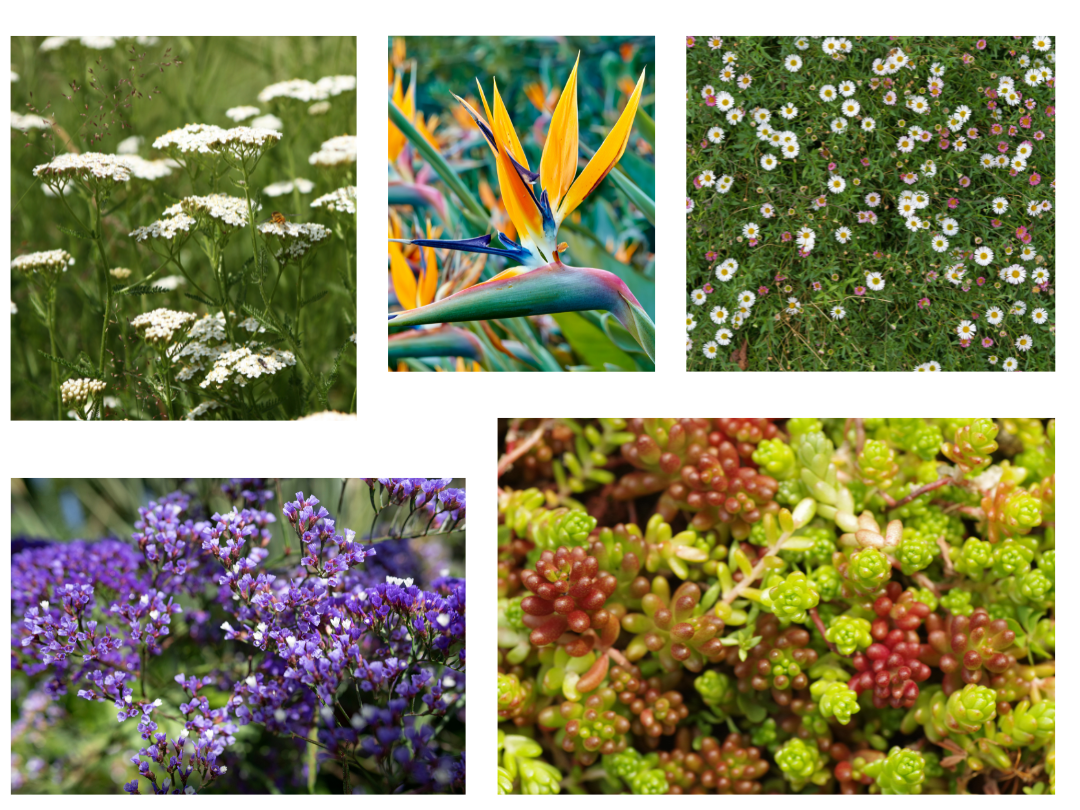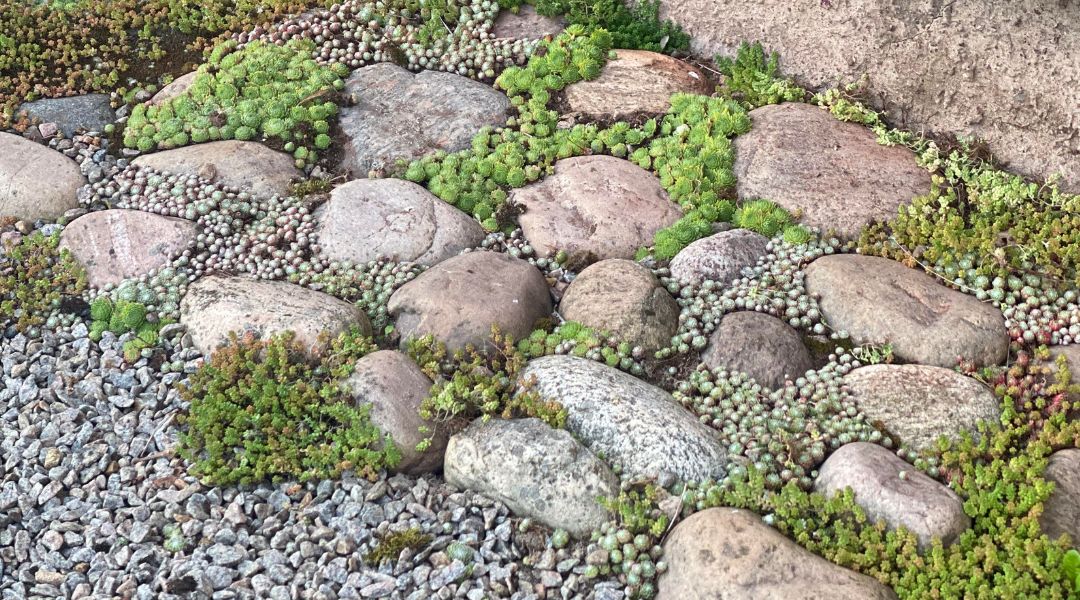I’ve been getting a lot of inquiries about fire-resistant landscapes and how homeowners can make their homes more fire-wise. With all the fires that have been happening in California (where I live), people in my area want to know how to make their landscape less susceptible to catching on fire—and bringing that fire to their front door.
One of the main things that is brought up in studies on how to create a fire-resistant landscape is creating defensible space, or different zones around the home that correspond to how fire resilient each zone should be.
There is the “immediate zone,” which is the actual home and not the landscaping. This is considered the most important place to start. It is referred to as “home hardening.” To help prevent the loss of your home, you need to consider things like the material you use for the roof and siding; the number of panes on your windows; the types of vents you use; the maintenance of your roof and gutters. You can learn more about home hardening here.
Defensible Space
Defensible space is about “defending” the landscape around your home from igniting, and it is usually broken down into three zones.
The first zone is referred to as Zone 0. The first zone (which is not usually referred to as one, but rather literally as ground zero), includes the first 5 feet from the house. Then you have Zone 1, which typically refers to the next 5 to 30 feet. And if you are lucky enough to have a big yard, you have Zone 2, which is typically the area 30 to 100 feet from the home.

- Zone 0: Keep as “ember resistant” as possible (0’-5’)
- Zone 1: “Lean, clean and green” zone – a catchy slogan, but in a non-combustible way (5′-30’)
- Zone 2: Reduced fuel zone (30′-100’)
I have attached plenty of resources below in case you want to do a deeper dive into each one of these zones. The recommendations for your area will vary. For this blog, we’re going to concentrate on Zone 0—perhaps the most important zone—and what that means in regards to designing your fire-resistant garden and adding any plants close to your house.
Zone 0
Zone 0 is an ember-resistant zone around a house which acts as a fire block. In order to block a fire, the area can’t have anything that can sustain a fire. Your goal with this zone is to significantly lower the risk of your home igniting. In other words, no wood fences or gates attached to your home; no trees overhanging your home; no comfy outdoor furniture; and no kindling in the form of combustible plants right there under your eaves.
But how do you keep the first 5 feet around your home clear of flammable vegetation when the area around a home usually has at least 5 feet of vegetation? Especially in the front yard!
The traditional American home is landscaped at its base with what is usually a hierarchy of foundational plants going from smaller to larger as you approach the home.
 Now, in flammable areas, we have re-think this aesthetic. Does this mean no plants? For high and very high fire hazard areas, probably yes. Nothing organic. In highly fire-prone areas, Zone 0 will be non-organic material like concrete, rocks or gravel, decomposed granite, or just dirt.
Now, in flammable areas, we have re-think this aesthetic. Does this mean no plants? For high and very high fire hazard areas, probably yes. Nothing organic. In highly fire-prone areas, Zone 0 will be non-organic material like concrete, rocks or gravel, decomposed granite, or just dirt.
In lower fire hazard areas, plants are usually allowed in Zone 0 as long as they follow a few rules. No vegetation touching the home. No vegetation within the first 2 feet of the home. Low vegetation in this area. And plants should be well maintained and plants should be from an approved list.
For the love of plants, I’m going to make a few suggestions for vegetation that have been found to be the most resistant to fire. While not fireproof, they are least likely to aid and abet in the spreading of flames, which will lower the risk of your home igniting.
Fire-Resistant Plants
There are many sources that provide lists of fire-wise plants, or plants that are found to be less likely to catch fire. The County of Santa Barbara Fire Department searched through many lists, cross-checking these references to come up with desirable plant choices in fire prone areas. In the right areas, these can be used judiciously in Zone 0 with fire-resistant succulents.
5 Fire-Resistant Plants for Your Garden
- Yarrow: There’s a lot to love about yarrow. Yarrow has low flammability and can recover quickly after wildfires. It is a good, low growing choice for a fire barrier. The yarrow specifically mentioned on most fire-resistant plant lists is Achillea millefolium. This plant is commonly known as common or white yarrow. Achillea tomentosa var. Moonshine also made it onto most approved lists.
- Santa Barbara Daisy: This versatile, decorative, low growing ground cover is fire resistant, drought tolerant, and blooms most the year. The botanical name is Erigeron karvinskianus.
- Sea Lavender: Botanically known as Limonium perezii, Sea Lavender is a beautiful evergreen perennial. It likes full sun and attracts bees, flies, hummingbirds, and spiders. In some parts of California it is considered a garden “escapee” and has entered into the “Watch List” of the California Invasive Plant Council. I have not noticed that problem in Los Angeles.
- Sedum: There are many succulents like sedum on the fire-resistant plant list. Succulents store water in their leaves and stems helping them resist combustion. The many varieties of sedum are great fire-resistant ground covers for a sunny spot.
- Bird of Paradise: I decided to add a shrub to this list, even though the height alone (up to 5’) may keep it out of Zone 0 in many fire prone areas. This easy to grow plant is less likely to ignite due to its thick, leathery leaves which contain a high moisture content.
These five plants are less likely to ignite, but maintenance still matters. You will want to keep them healthy, watered, and free of dead debris.

Clockwise from top left: Yarrow, Bird of Paradise, Santa Barbara Daisy, Statice, Sedum.
Fire-Prone Plants
Some plants are simply able to catch fire and burn more easily. They may have dried bark on their trunks, dead branches under their leaves, contain volatile substances such as oils, have needle-like leaves, or a low moisture content.
In the recent fires in Los Angeles County, according to an article in the Los Angeles Times, the “highly flammable Italian cypress and arborvitae looked like charred poles” and “native shrubs such as toyon, lemonade berry and manzanita burned to stumps.” So, we can comfortably rule out these plants from our Zone 0. Unfortunately, there are many other beloved plants that should also be ruled out.
Again, the County of Santa Barbara Fire Department searched through many lists to come up with a list of undesirable plants in fire prone areas. I have chosen to highlight 5 of these plants that are commonly used in my area.
5 Highly Flammable Plants
- Bougainvillea Sp – Bougainvillea
- Dodonaea viscosa – Hopseed Bush
- Juniperus spp.
- Bambusa Spp – Bamboo
- Cortaderia selloana – Pampas Grass

Clockwise from top left: Bougainvillea, Hopseed Bush, Juniper, Bamboo, Pampas Grass
No bougainvillea?! Sure, no juniper, that’s just kindling. But no bougainvillea? Zero in Zone 0? And, what about rosemary? I think I have made it clear in other posts on this blog how much I love rosemary. Sadly, in highly fire-prone areas, Rosmarinus is on the undesirable list of vegetation near your home. It is approved outside of Zone 1, so you’re good to go if you plant it at least 30 feet from the house—just make sure it is adequately spaced and maintained with proper irrigation and pruning.
This is going to be a lot to adapt to! Rules, regulations, and laws around home hardening and defensible spaces in fire hazard areas are forming. Home insurance rates may soon depend on defensible space implementation. But don’t fret! Karen and I will be here to help you through it!

